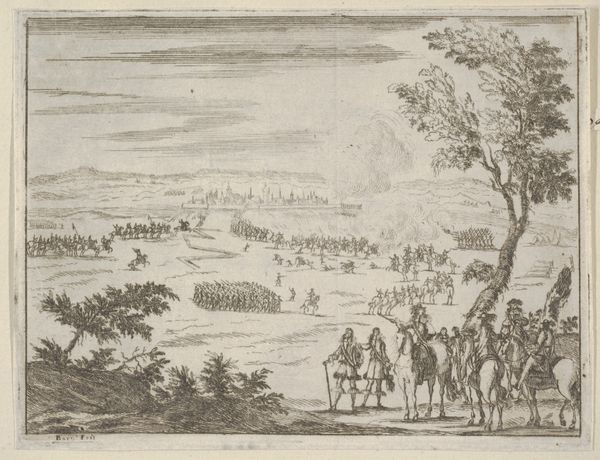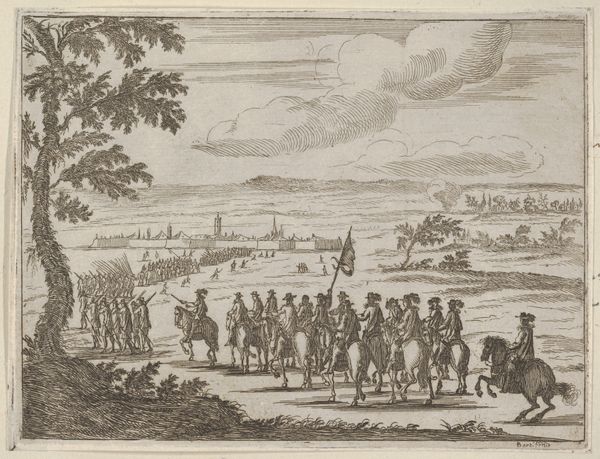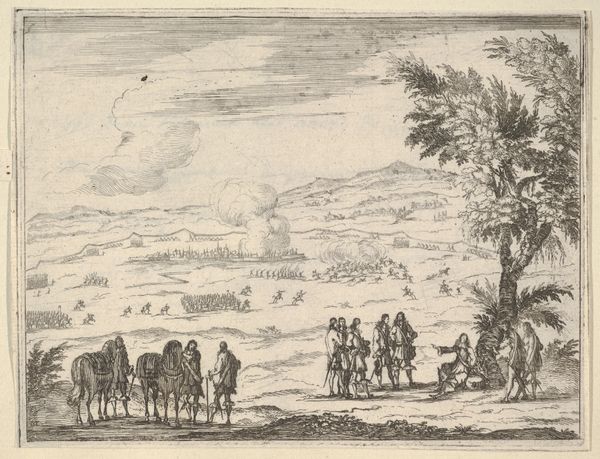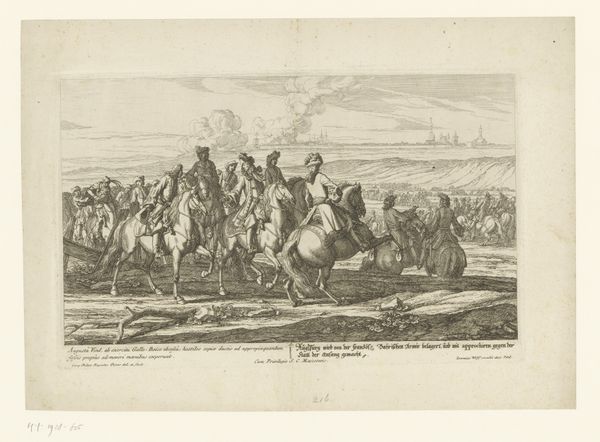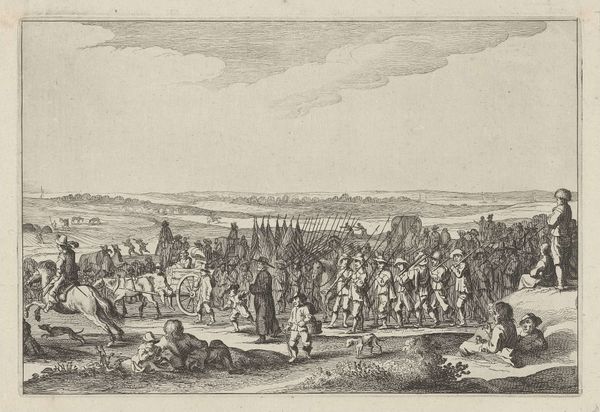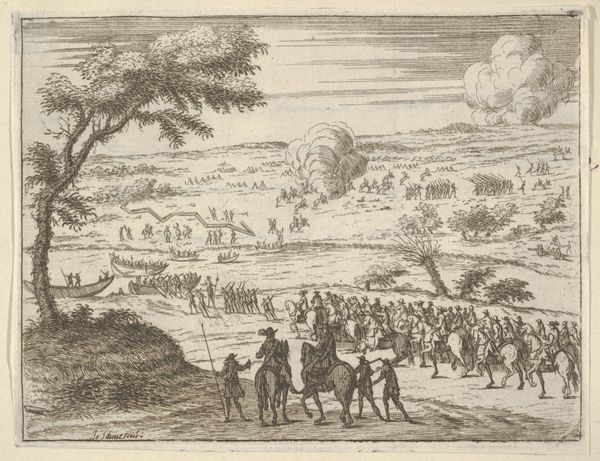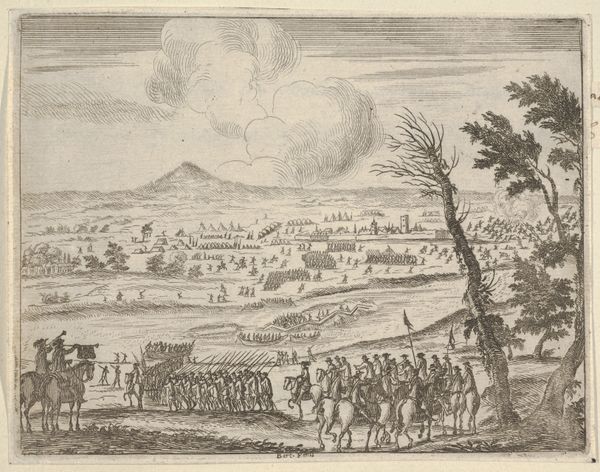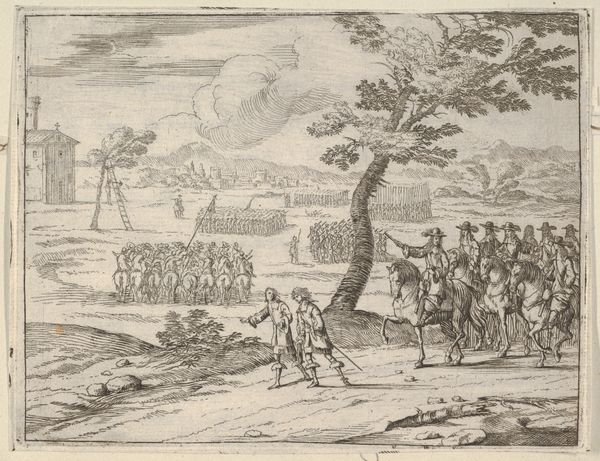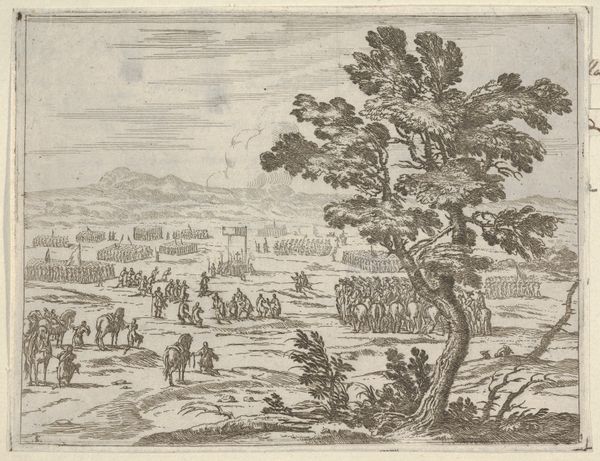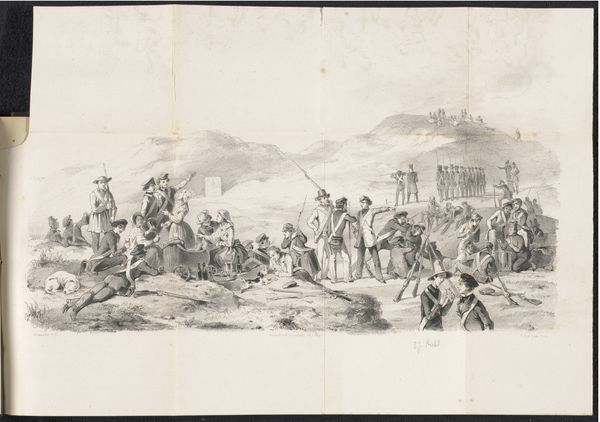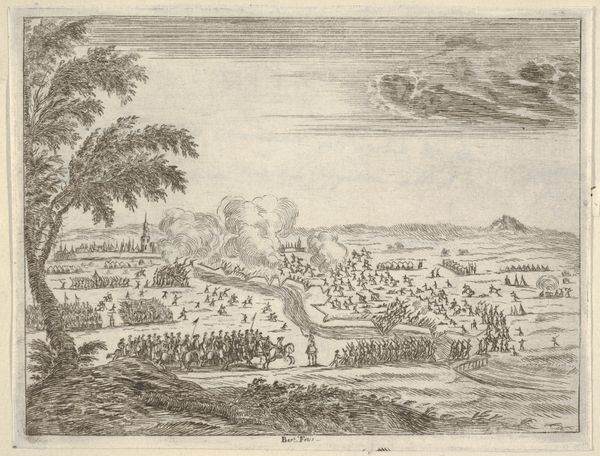![Francesco I d'Este Liberates the City of Turin and Leaves it in the Hands of the Duke of Savoy, from L'Idea di un Principe ed Eroe Cristiano in Francesco I d'Este, di Modena e Reggio Duca VIII [...] by Bartolomeo Fenice (Fénis)](/_next/image?url=https%3A%2F%2Fd2w8kbdekdi1gv.cloudfront.net%2FeyJidWNrZXQiOiAiYXJ0ZXJhLWltYWdlcy1idWNrZXQiLCAia2V5IjogImFydHdvcmtzLzJmYzgwMmE0LWVkYjctNDZkZi05Mjc4LWYxOGJmZDE3OWIyYi8yZmM4MDJhNC1lZGI3LTQ2ZGYtOTI3OC1mMThiZmQxNzliMmJfZnVsbC5qcGciLCAiZWRpdHMiOiB7InJlc2l6ZSI6IHsid2lkdGgiOiAxOTIwLCAiaGVpZ2h0IjogMTkyMCwgImZpdCI6ICJpbnNpZGUifX19&w=3840&q=75)
Francesco I d'Este Liberates the City of Turin and Leaves it in the Hands of the Duke of Savoy, from L'Idea di un Principe ed Eroe Cristiano in Francesco I d'Este, di Modena e Reggio Duca VIII [...] 1659
0:00
0:00
drawing, print, engraving
#
drawing
#
baroque
# print
#
landscape
#
figuration
#
soldier
#
horse
#
line
#
cityscape
#
history-painting
#
italy
#
engraving
Dimensions: Sheet: 4 13/16 × 6 5/16 in. (12.2 × 16.1 cm)
Copyright: Public Domain
Editor: So, here we have "Francesco I d'Este Liberates the City of Turin," an engraving by Bartolomeo Fenice from 1659. It depicts a triumphant return, a classic history-painting scene. It's interesting how distant and almost dreamlike the whole scene appears. How do you interpret this work, especially in its historical context? Curator: This piece, like many works of its time, needs to be unpacked by situating it within its sociopolitical context. We’re not just looking at a record of an event; we’re seeing a carefully constructed image of power. Consider the title: "Liberates." What does liberation mean here, and for whom? The ruling elite, certainly. But what about the populace? How are their narratives included or excluded from this representation of history? Editor: That’s a great point. The figures in the foreground, presumably Francesco I d'Este and his entourage, are given such prominence while the citizens of Turin are nowhere to be seen. It does make me wonder about whose story is truly being told. Curator: Exactly! This isn’t a neutral portrayal. It's a strategic deployment of imagery designed to legitimize and reinforce existing power structures. Ask yourself: How does the artist employ visual cues, like the elevated perspective and the glorification of military figures, to shape our understanding of this historical moment? How might this image function as propaganda, shaping public opinion and reinforcing social hierarchies? Editor: It almost feels like a stage play, everything carefully posed. So, beyond the surface narrative of liberation, it's actually reinforcing class divides? Curator: Precisely. And thinking critically about those divides – the invisible labor, the voiceless masses – that’s where we begin to understand the true complexities embedded within this seemingly straightforward depiction of a historical event. Editor: That's fascinating. It’s shifted my entire understanding. I initially saw a simple, celebratory image, but now I see it as a complex statement about power and representation. Curator: Indeed. Engaging with art is often an exercise in questioning what we see, interrogating the narratives presented, and understanding the power dynamics at play. Hopefully we have given listeners food for thought!
Comments
No comments
Be the first to comment and join the conversation on the ultimate creative platform.

